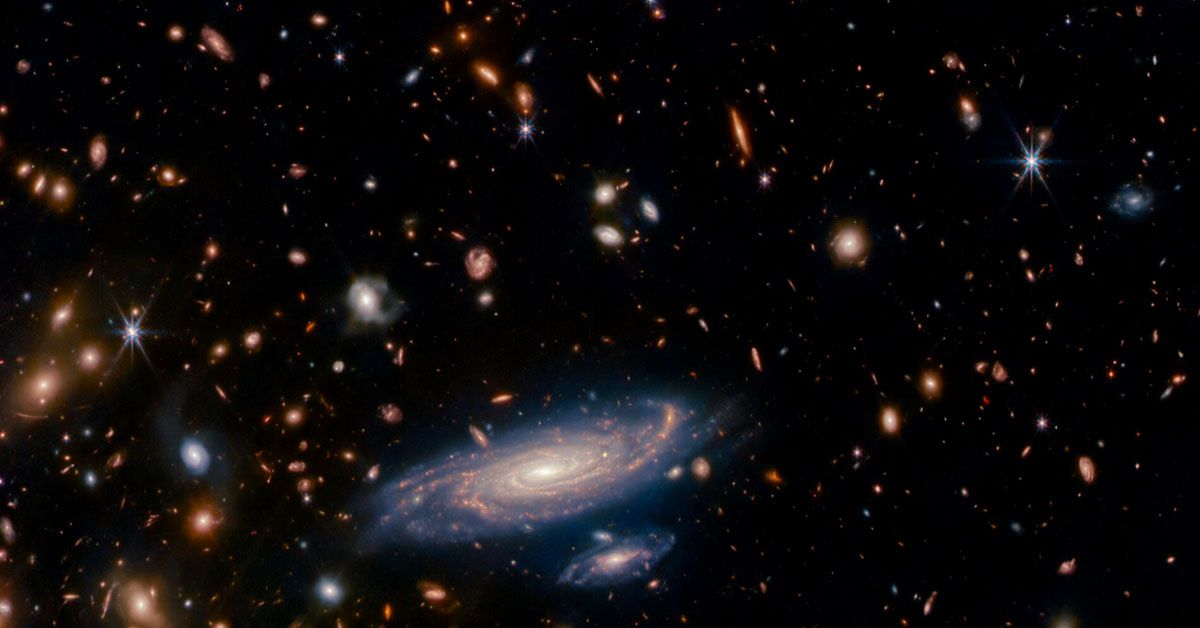Amidst the boundless panorama of the cosmos, we teeter on the cusp of groundbreaking revelations that promise to revolutionize our perception of the universe. The arrival of the James Webb Space Telescope (JWST) expands the reach of our celestial exploration, probing deeper into the mysteries of space and time than ever thought possible.
Embarking on this uncharted voyage through JWST's discerning eye, we're offered an intimate look at the enigmatic early universe, thereby defying conventional astronomical paradigms. As we venture into this enlightening domain, the mosaic of our understanding unfurls, unveiling intricate designs and concealed complexities.
First Images: A Glimpse into the Unseen
Can you imagine peering into a time machine, revealing stories from eons ago? Well, the JWST has done just that! Its first deep-field image, composed of a mosaic of 690 individual frames, portrays a patch of sky in the vicinity of the Big Dipper's handle, approximately eight times larger than its predecessor. It’s like holding a massive interstellar jigsaw puzzle where each piece is an individual galaxy from the early universe.
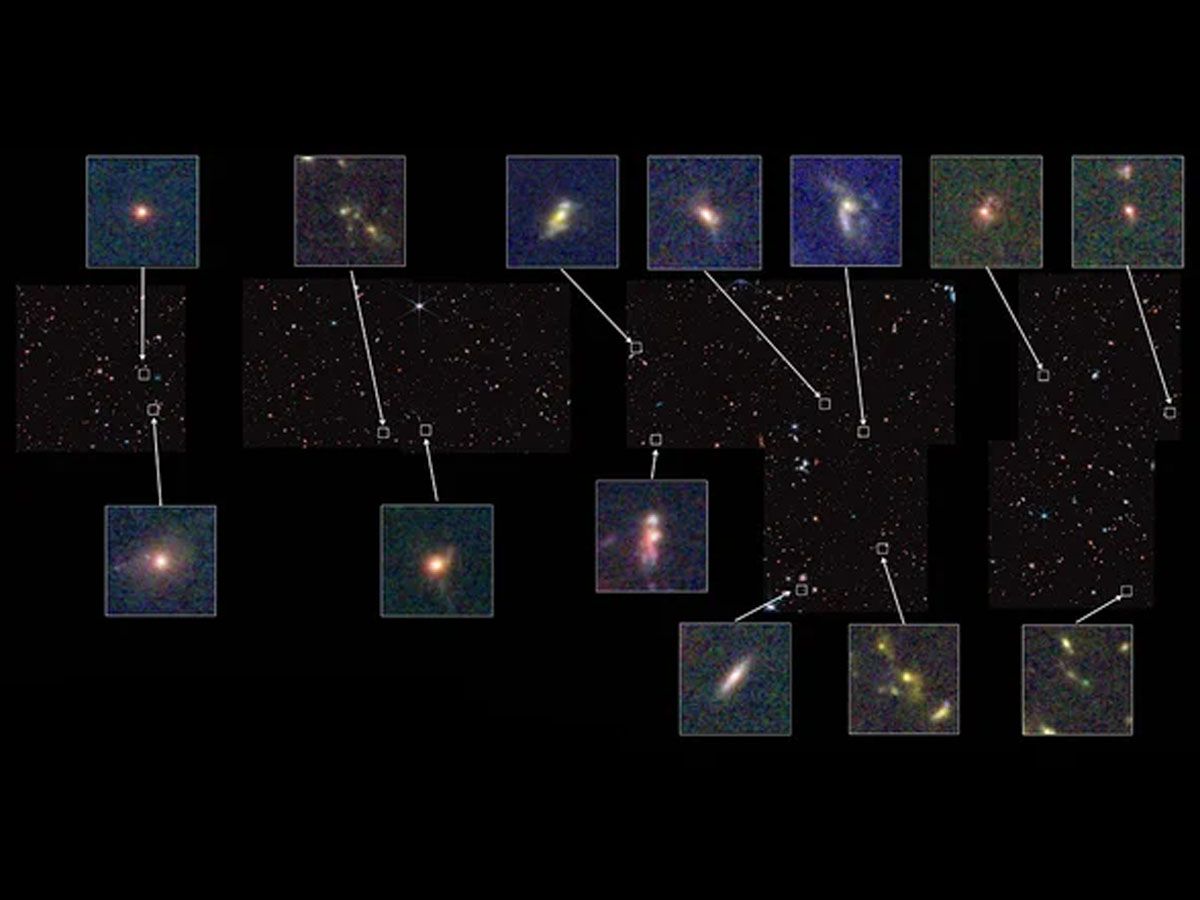
These images present an intricate ballet of galaxies, some of which existed merely hundreds of millions of years after the big bang. Their faint glows, a silent testament to their distance and age were unveiled by the unparalleled infrared sensitivity of JWST's Near Infrared Camera (NIRCam). This marked a monumental leap in cosmic exploration, providing an unprecedented look back into the universe’s nascent epochs.
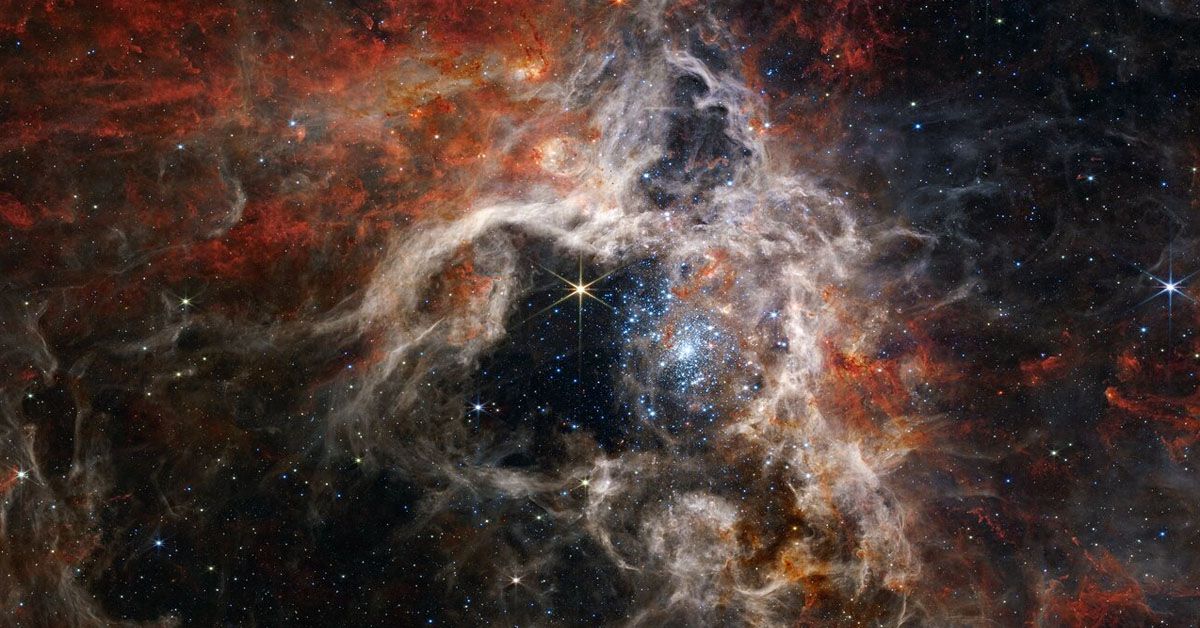
Galactic Formation: Challenging the Established Timeline
Just like an art historian deducing the timeline of an artwork, astronomers are piecing together the timeline of our cosmos. The early galaxies observed by JWST have pushed the boundaries of our understanding of the universe's infancy, presenting an interesting conundrum. These galaxies suggest that stars started forming earlier and more rapidly than previously predicted, acting as cosmic toddlers running before they could crawl, according to conventional astrophysical wisdom.
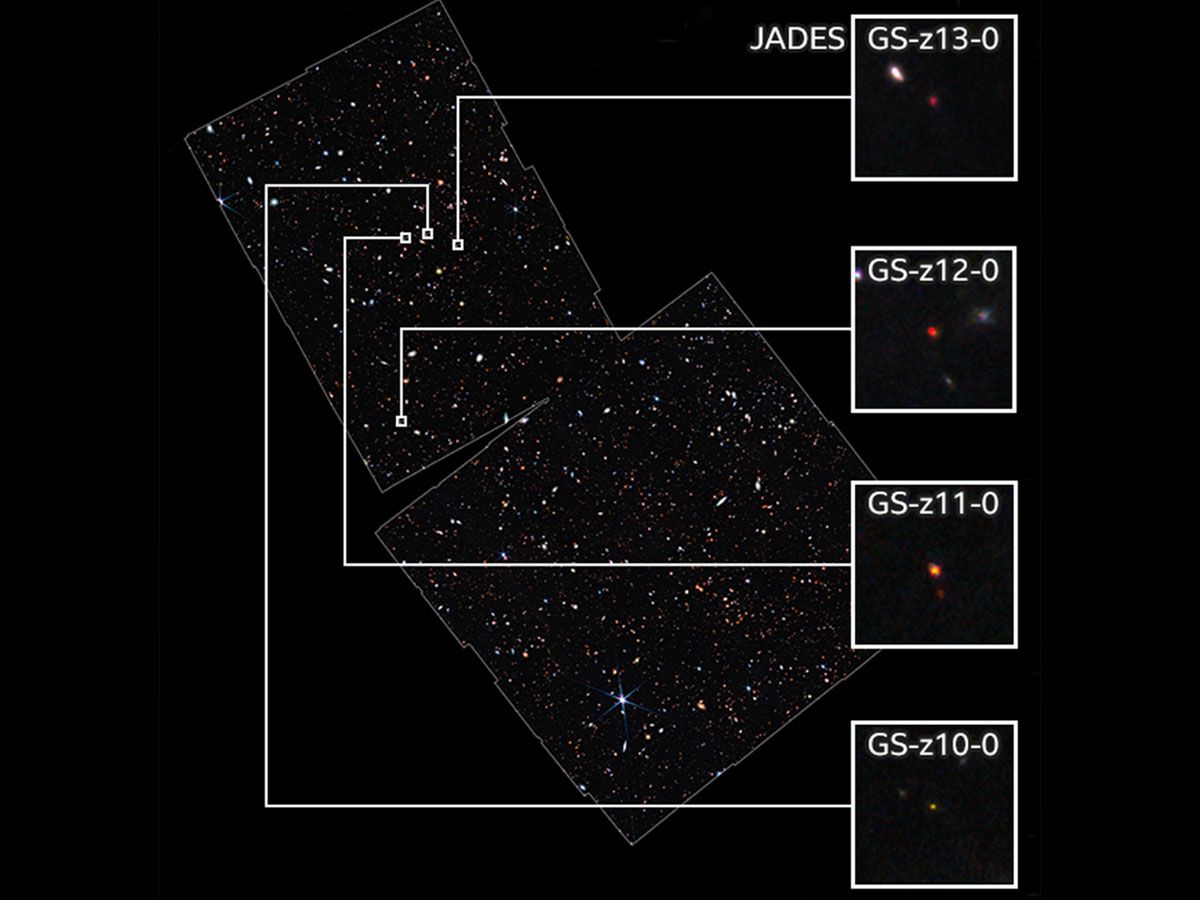
The discovery of the most distant galaxy so far, named JADES-GS-z13-0, has thrown another spanner into the works. This galaxy, witnessed as it appeared just 320 million years post-Big Bang, puts our understanding of galactic formation timescales into question. Could the universe have been bustling with stellar nurseries earlier than we thought? The answer seems to lean towards a tantalizing yes.
Distancing the Distant: Photometry vs. Spectroscopy
Now, estimating the distance of these galaxies is a crucial step in our cosmic detective work. And the tools in our kit? They are photometry and spectroscopy.
Photometry uses the brightness of galaxies to make quick-and-dirty estimates of their distances. It’s like guessing the distance of a lighthouse from its brightness. This technique came in handy during JWST's initial surveys, allowing scientists to get a preliminary idea of the distance scales we're dealing with.

However, spectroscopy is the gold standard for astronomical distances, akin to using a GPS instead of a rough map. This method is more time-consuming but provides more precise distance estimates by looking at spectral lines in the light from galaxies.
The cool part? The initial spectroscopic data have been matching up with the earlier photometric estimates, boosting confidence in our understanding of these galaxies' distances. That said, some high-redshift candidate galaxies are still head-scratcher, warranting further study.
Discovering Galactic Clusters: The Journey of JWST and Hubble
Ever fancied time traveling? The JWST has made this seemingly fantastical feat a reality, offering a glimpse into a time just 650 million years after the big bang. Through its gaze, we've uncovered a protocluster of seven galaxies at a distance known as redshift 7.9. This cluster, like a celestial treasure trove, paints an exquisite portrait of the early universe's large-scale structure.

But this discovery wasn't a solo effort. The Hubble Space Telescope played a vital role in identifying these galaxies as promising candidates for observation. It's like Hubble was the scout and Webb the investigator, following up on the potential leads. Based on the collected data, astronomers have predicted the protocluster's future development. Can you guess what it is expected to resemble? The Coma Cluster is a massive galaxy cluster in the modern universe, akin to a bustling cityscape of galaxies!
Protoclusters and Their Spectral Secrets
Taking the telescope's capabilities a notch higher is its Near-Infrared Spectrograph (NIRSpec), a device as futuristic as it sounds. Think of NIRSpec as a cosmic sleuth, deciphering the spectral fingerprints of the universe's constituents. It provided precise measurements that confirmed the galaxies' collective distance and their high velocities within a halo of dark matter.
Now, here's the real kicker: Based on the spectral data, astronomers modeled and mapped the protocluster's future development. The inference? It's predicted to evolve into one of the densest known galaxy collections with thousands of members. Imagine a bustling metropolis of galaxies teeming with interstellar activity!
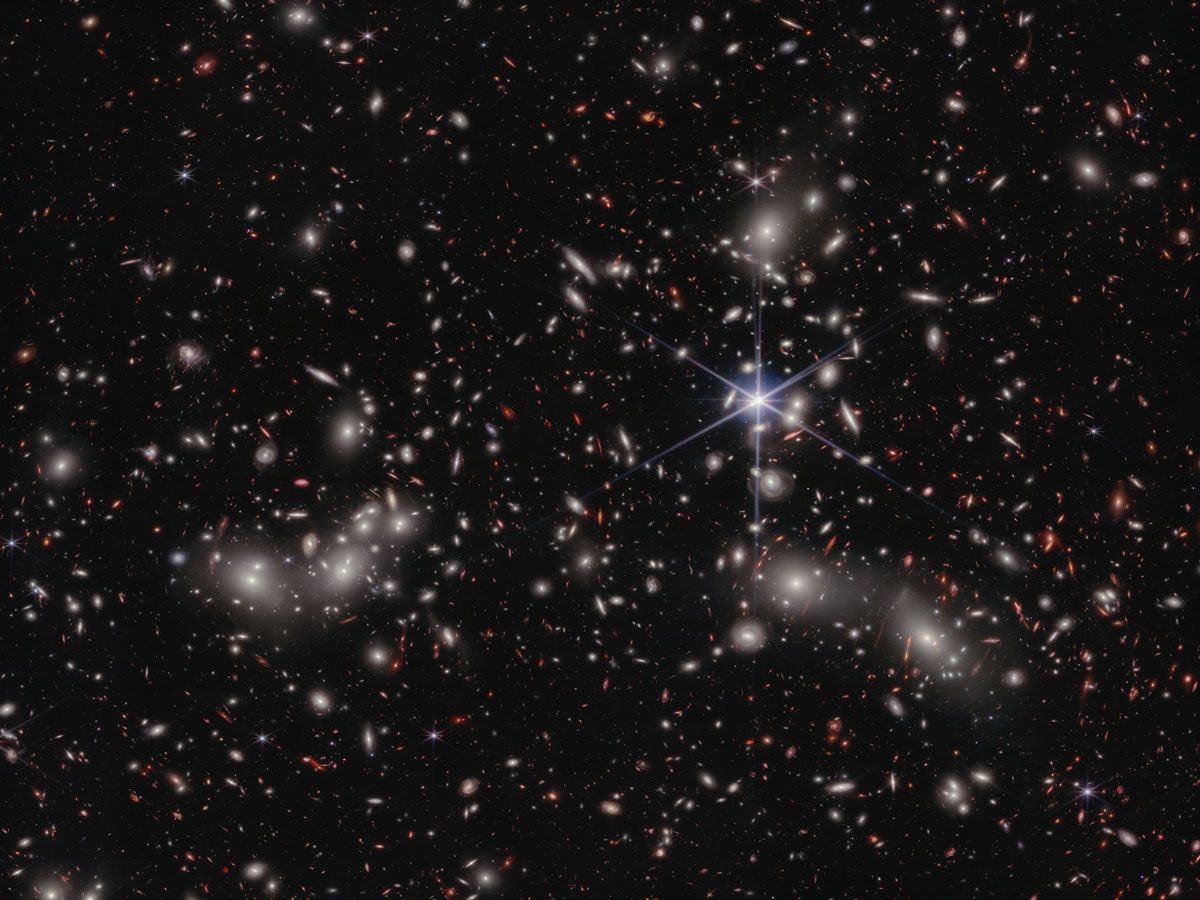
Webb's infrared instruments are akin to high-tech night vision goggles. These instruments, developed specifically for studying large clusters, allowed us to peer deeper into the cosmos than ever before. These clusters, like Pandora's Cluster and Coma, are known for causing gravitational lensing, a phenomenon where massive objects distort space-time, magnifying objects beyond them. Thanks to Webb's infrared instruments and gravitational lensing, we're now uncovering unprecedented details about these celestial giants.
The Lambda-Cold Dark Matter Model Under Scrutiny
All these discoveries by JWST bring us to a crossroads of sorts. The ΛCDM model, the currently accepted cosmological model, is being put to the test. This model, while successful in explaining many cosmic phenomena, is coming under scrutiny due to the size and mass of the earliest galaxies observed by JWST. If you think about it, it's a bit like having an old map that's been accurate so far but is now showing discrepancies.
But that's not the end of the story. Clara Giménez Arteaga, a Ph.D. student at the Cosmic Dawn Center, has thrown a fresh perspective into the mix. Instead of considering the entire galaxy as a single entity, she looked at galaxies on a pixel-by-pixel basis. This approach resulted in inferred stellar masses up to ten times larger than the standard approach. It's like zooming into a detailed painting to appreciate its intricacies!
#JamesWebb's "too massive" galaxies may be even more massive.
— DAWN - The Cosmic Dawn Center (@DAWNCopenhagen) May 17, 2023
Clara Giménez Arteaga finds that being able to resolve galaxies in sufficient detail yields up to 10× higher stellar masses, compared to unresolved measurements.
🇬🇧https://t.co/zNOxZjBxHp
🇩🇰https://t.co/3lim1LsNBl
But let's take a step back. Studying distant galaxies isn't as simple as peering through a cosmic magnifying glass. Factors such as potential underestimation of observed epochs, overestimation of stellar masses, and even the chance discovery of the most massive galaxies at that time can skew our interpretations. Additionally, the difficulty in discerning individual stars in these distant galaxies adds another layer of complexity. Astronomers are continually searching for alternative signs and signals that could provide deeper insights into these enigmatic cosmic entities.
For instance, the hunt for signs of stellar winds or supernovae is an ongoing process. The discovery of such signals could reveal the hidden engines that fueled the rapid growth of these early galaxies. On this thrilling journey of cosmic exploration, each new piece of data not only contributes to a more nuanced understanding of our universe but also opens the door to more fascinating questions.
Moving Forward: Expectations and Challenges
As we peel back the layers of the cosmic onion with the JWST, there are certain expectations and challenges that lie ahead on this astronomical expedition. Let's navigate through this new frontier together, understanding the collaborations that promise new discoveries and the emerging concerns about data accessibility.
Collaborative Astronomy: Future Partnerships and Surveys
The beauty of our quest to understand the universe is that it's a shared journey. The exploration of the cosmos isn't confined to a single telescope or a single space agency. It's a collaborative endeavor, where various programs and instruments come together to provide a more comprehensive picture of the universe's grand tapestry.
The COSMOS-Webb survey, for instance, is a highly anticipated initiative set to expand our understanding of high-redshift galaxies. By working in tandem with JWST, the survey will help identify more candidates for detailed study, ultimately unveiling an even more profound understanding of the early universe.
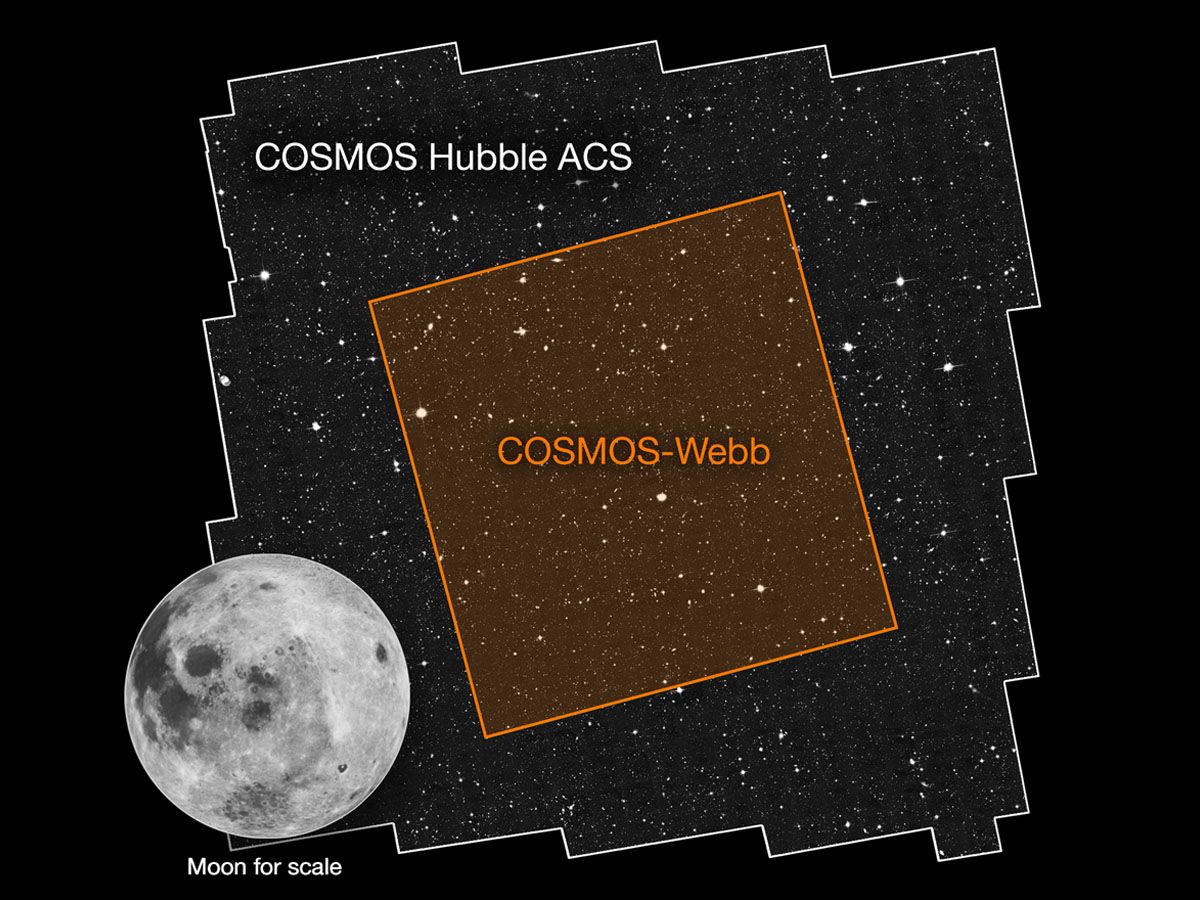
Similarly, a promising collaboration lies on the horizon with NASA's Nancy Grace Roman Space Telescope. With its wider field of view, the Roman Space Telescope can help identify protocluster galaxy candidates. JWST can then follow up with its high-resolution infrared tools, providing precise spectroscopic confirmation. These cooperative missions, where each instrument plays to its strengths, promise to deliver unprecedented insights into the origins and evolution of galaxies.
Data Accessibility: An Emerging Issue
While the JWST has opened a treasure trove of information for astronomers, an emerging issue relates to data accessibility. The rapid availability of JWST's data has sparked some concerns within the scientific community. Some researchers feel frustrated, believing they've been scooped by others who have quicker access to the telescope's observations.
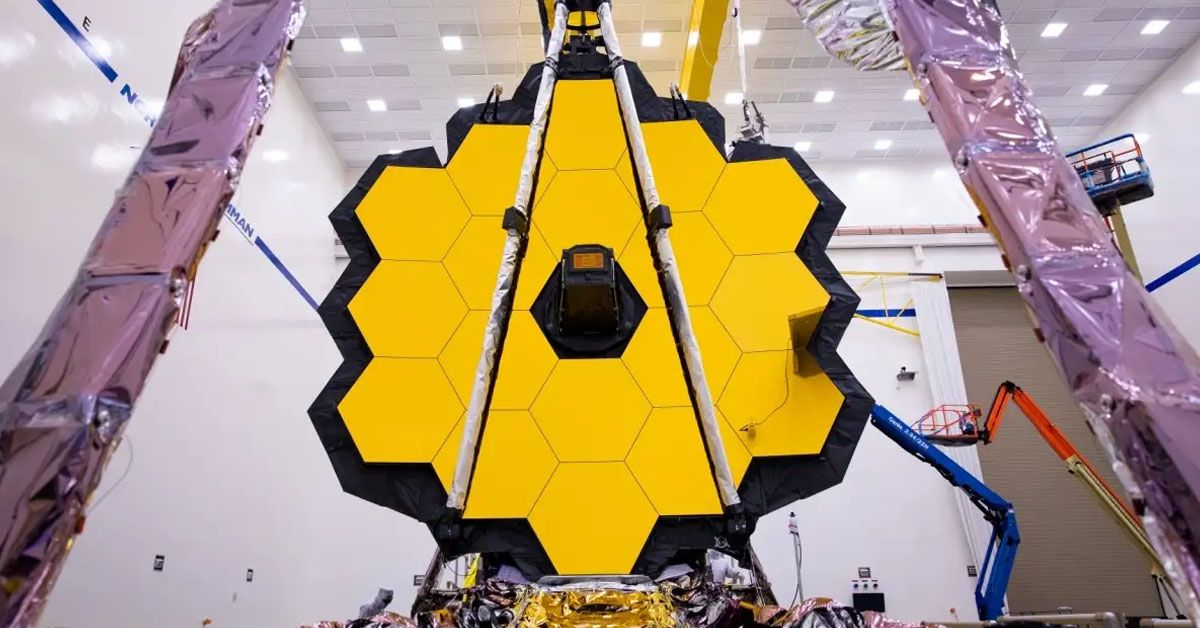
This issue underscores the need for a balance between swift data release, which benefits the entire scientific community, and protecting the interests of the teams who proposed the observations. As the JWST continues to peer deeper into the universe, finding a solution that promotes collaborative research while respecting individual efforts is an essential challenge to tackle. Navigating this path will be crucial in fostering a supportive environment where knowledge and discovery can flourish.
Sources: nasa.gov / scientificamerican.com / phys.org
